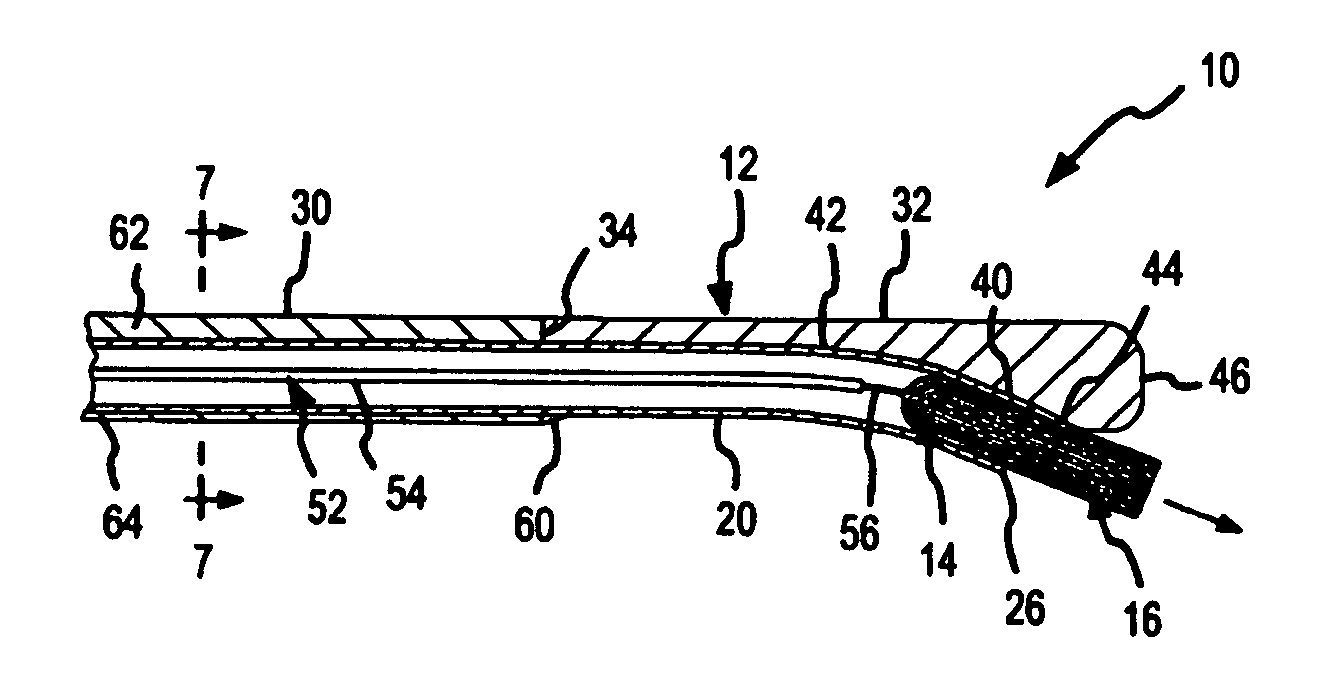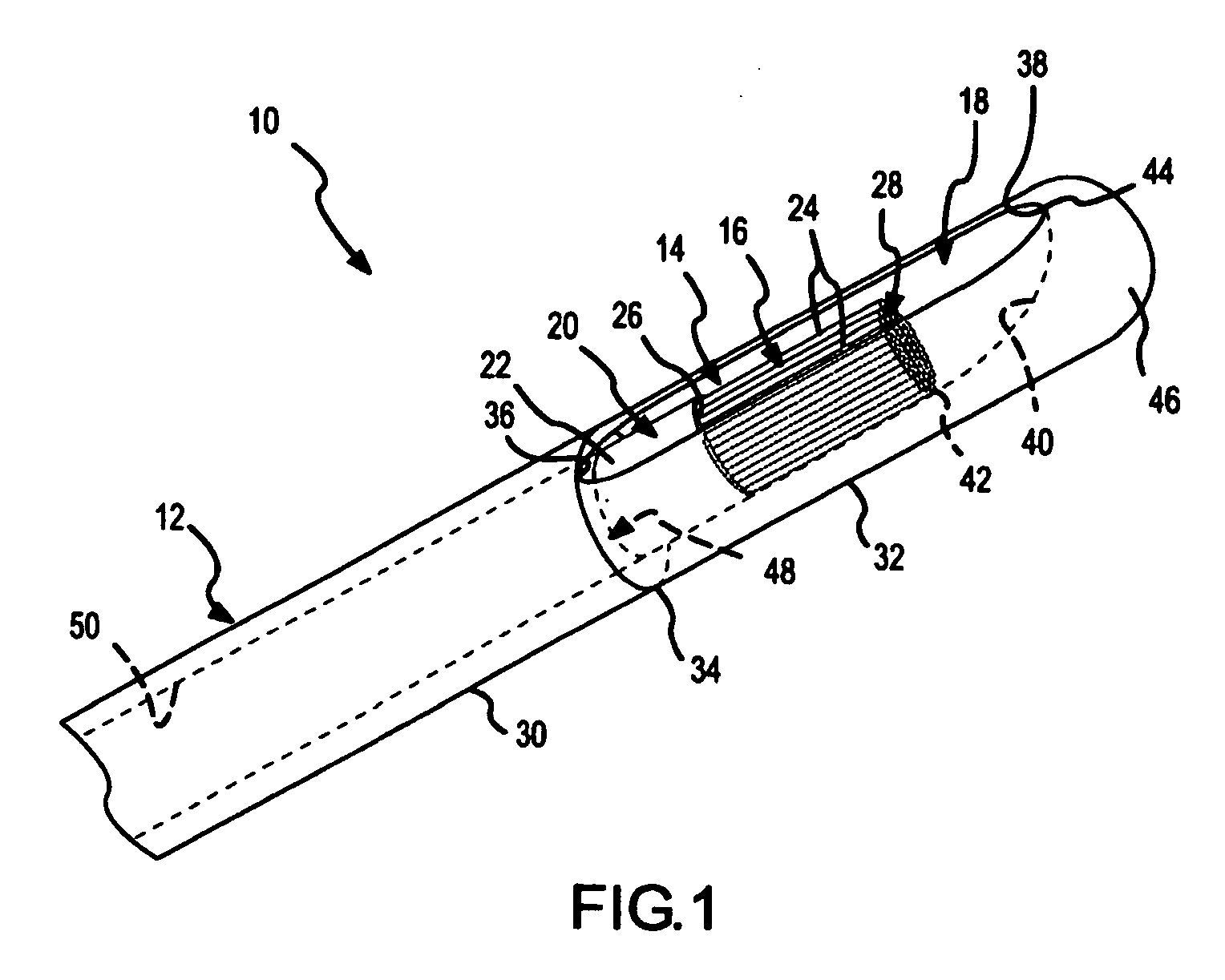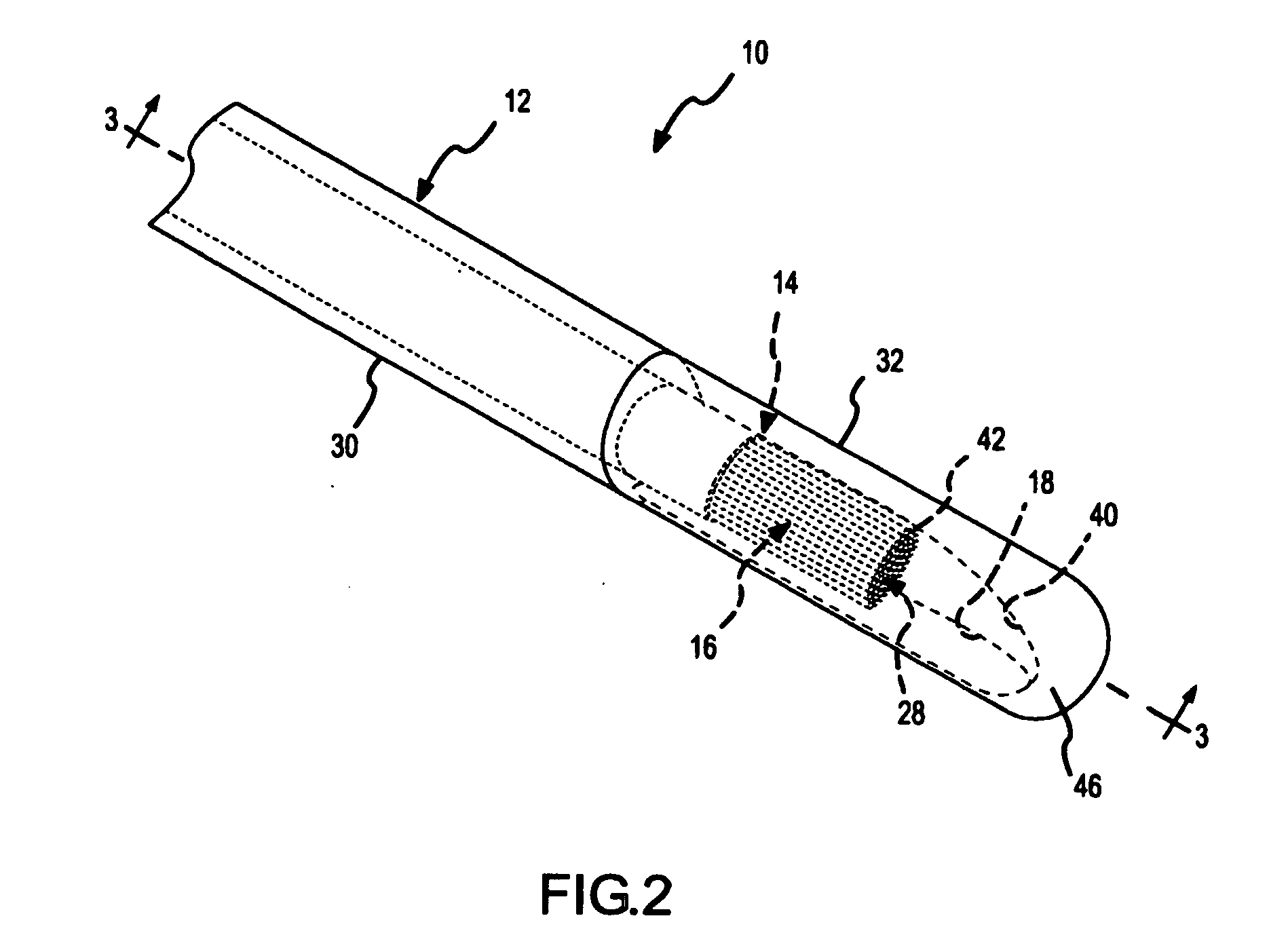Side-port sheath for catheter placement and translation
a catheter and side-port technology, applied in the field of side-port sheaths, can solve the problems of large temperature gradients and hot spots, undesirable coagulum and charring of surface tissue, and may be encountered with a large amount of difficulty, so as to reduce the amount of conductive fluid, reduce the formation of undesirable coagulum and charring of surface tissue, and mitigate the effect of electrode-tissue contact problems
- Summary
- Abstract
- Description
- Claims
- Application Information
AI Technical Summary
Benefits of technology
Problems solved by technology
Method used
Image
Examples
first embodiment
[0046]FIG. 1 is a fragmentary, isometric view of a diagnostic or treatment device 10 comprising a side-port sheath 12 according to the present invention. The side-port sheath 12 is a main or outside catheter that facilitates placement and translation of a gliding or inside catheter 14. As alluded to above, the gliding catheter 14 may be any type of diagnostic or treatment catheter, such as an electrophysiology catheter or an ablation catheter (e.g., a wet-brush or a Livewire.™ catheter available from St. Jude Medical). In FIGS. 1-27, the gliding catheter 14 is depicted as a brush electrode catheter, but, as explained further below in connection with FIGS. 28-32, a variety of different types of gliding catheters could be used with the side-port sheath of the present invention. As a brush electrode catheter, the gliding catheter 14 depicted in FIG. 1 comprises a catheter sheath 20 having an outside surface 22. A brush electrode 16 comprising a plurality of conductive and / or nonconduct...
second embodiment
[0055]FIG. 10 is a fragmentary, isometric view of a diagnostic or treatment device 10′ comprising a side-port sheath 82 according to the present invention. This figure is similar to FIG. 1, but depicts a deflection and suspension ribbon, wire, or strip 84 in phantom alongside an undeployed gliding catheter 14 that is adjacent to the elongated side-port opening 86 in the tip 88 of the side-port sheath 82. The suspension ribbon 84 may comprise, for example, a ribbon of Nitinol or NiTi. As shown to good advantage in FIG. 10, the curved surface 90 that extends from the upper wall 92 of the side-port sheath 82 to a distal edge 94 of the side-port opening 86 is steeper than the gliding surface 40 depicted in, for example, FIGS. 1-3. As explained further below, in this embodiment, the suspension ribbon 84 not only directs the gliding electrode catheter 14 toward the side-port opening 86, but also suspends the electrode 16. Since the suspension ribbon helps push the gliding electrode cathet...
PUM
 Login to View More
Login to View More Abstract
Description
Claims
Application Information
 Login to View More
Login to View More - R&D
- Intellectual Property
- Life Sciences
- Materials
- Tech Scout
- Unparalleled Data Quality
- Higher Quality Content
- 60% Fewer Hallucinations
Browse by: Latest US Patents, China's latest patents, Technical Efficacy Thesaurus, Application Domain, Technology Topic, Popular Technical Reports.
© 2025 PatSnap. All rights reserved.Legal|Privacy policy|Modern Slavery Act Transparency Statement|Sitemap|About US| Contact US: help@patsnap.com



